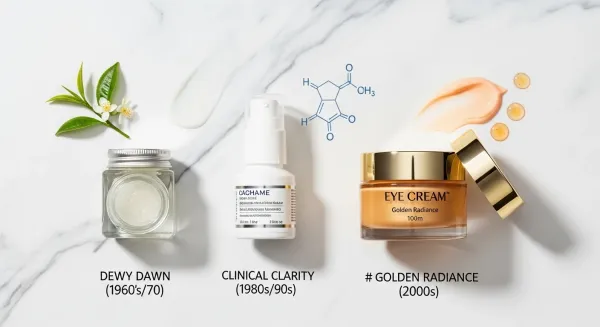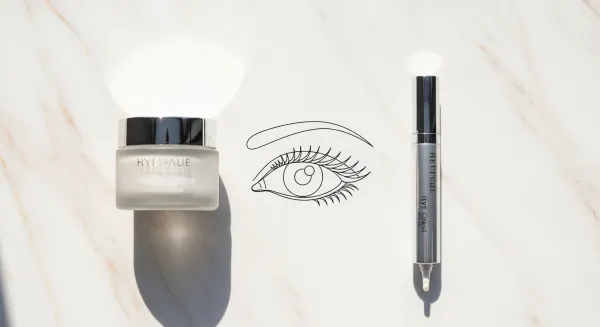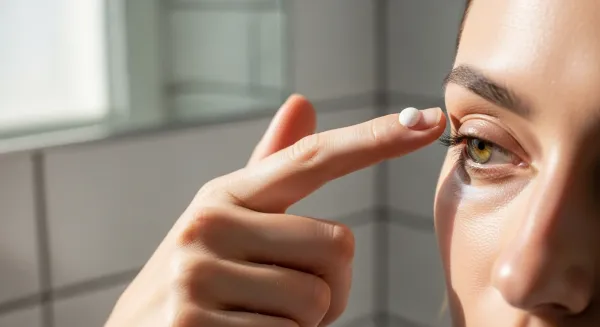The Best Sunscreens for Teens in 2025: Protecting Your Skin Like a Pro
Discover the best sunscreens for teens with our comprehensive guide. Learn about SPF, broad-spectrum, mineral vs chemical, and application tips for optimal sun protection.
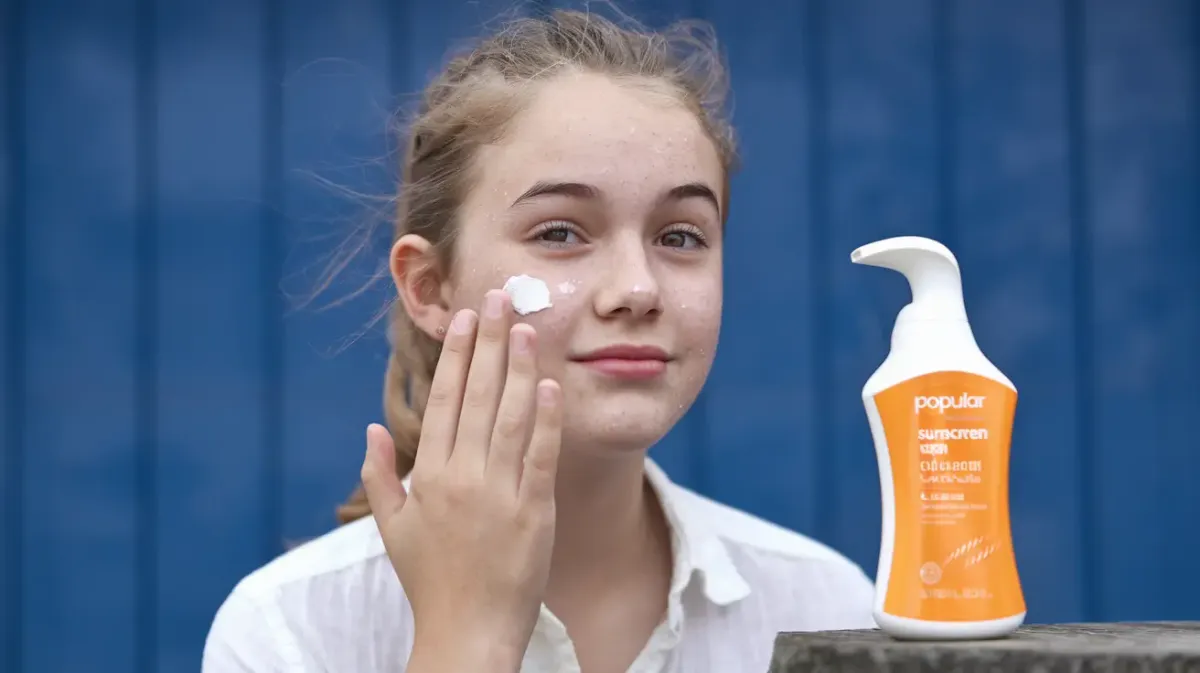
Ever wondered why some people seem to age like fine wine while others look like they've been through a sandstorm?
The secret often lies in one simple, yet crucial step: sun protection. For teens, this is especially important because the damage you do to your skin in your younger years can have a huge impact later in life.
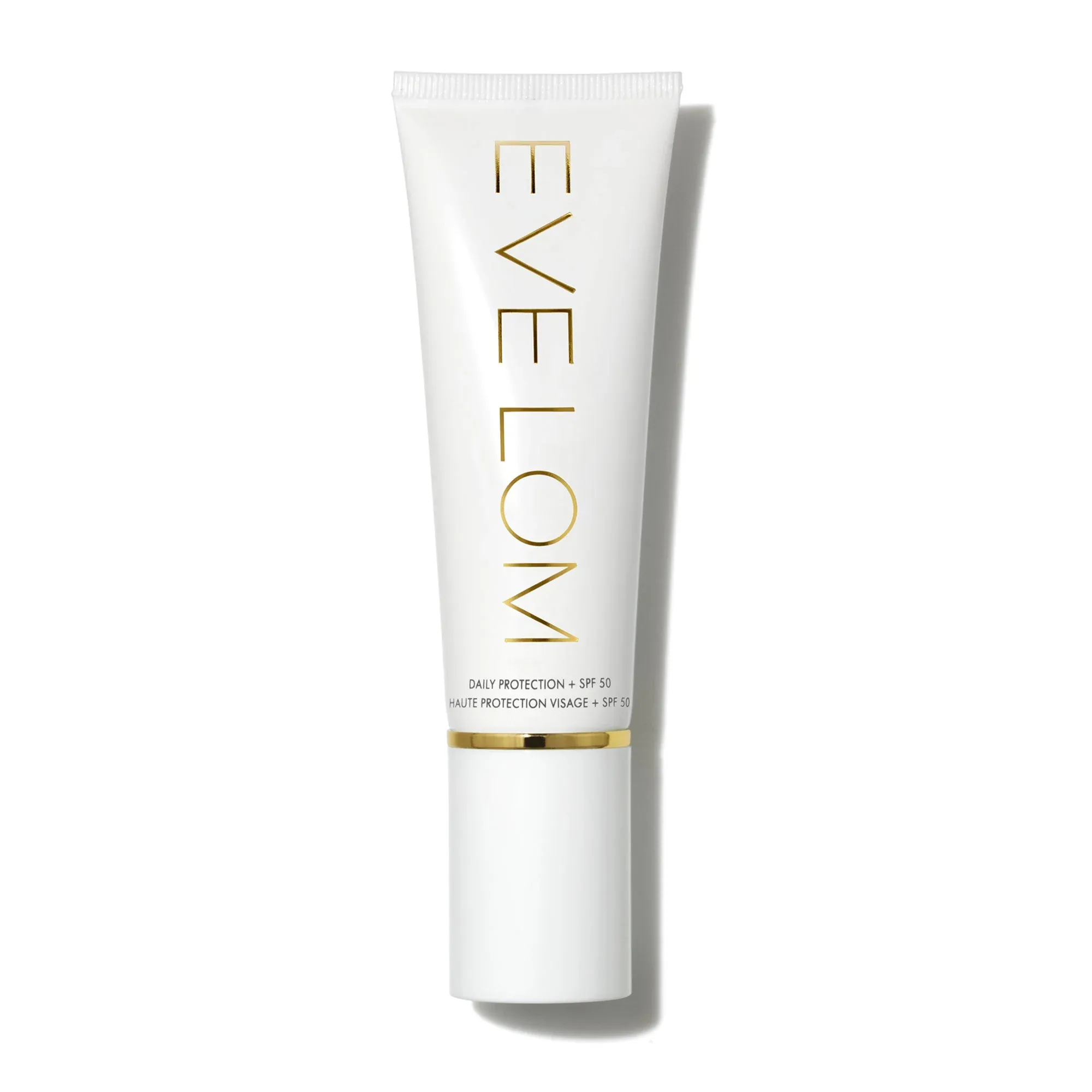
Daily Protection SPF 50 Sunscreen
Indulge in a luxurious daily moisturizer with sun protection.
Lightweight and formulated with six scientific sunscreens and powerful ingredients safe for all skin types, our Daily Protection SPF 50 guards skin from harmful UVA/UVB rays while defending skin from everyday environmental damage.
It’s saturated with bountiful ingredients; Niacinamide moisturises skin, a Vitamin C derivative brightens, and Paracress Flower Extract helps to firm and lift.
Disclaimer: Some links on this page are affiliate links, which means we may earn a commission if you make a purchase through them.
Finding the best sunscreens for teens isn't just about avoiding a sunburn; it's about safeguarding your skin's future.
As someone who's spent years studying skin health, I've seen firsthand the difference that consistent sun protection can make.
Let's dive into how to choose the right sunscreen and make it a non-negotiable part of your daily routine.
Key Takeaways: The Best Sunscreens for Teens
Before we get into the nitty-gritty, here are the top 5 things you need to know about the best sunscreens for teens:
- SPF 30-50 is your sweet spot: Don't get caught up thinking higher SPF is always better. SPF 30 to 50 provides excellent protection for daily use.
- Broad-spectrum is a must: Make sure your sunscreen protects against both UVA and UVB rays. Think of it like having a shield against the sun's two main types of harmful radiation.
- Mineral sunscreens are generally safer: Look for zinc oxide or titanium dioxide. These are less likely to irritate your skin and are better for the environment.
- Non-comedogenic is key for acne-prone skin: This means the sunscreen won't clog your pores, which is super important for teens who are often dealing with breakouts.
- Reapplication is crucial: Don't just put it on once and forget about it. Reapply every two hours, especially after swimming or sweating.
As a teenager, you're probably more concerned about what's happening on your phone than what's happening to your skin. But trust me, the sun's rays are sneaky. They're not just a summer problem; they're around all year, even on cloudy days.
The sun emits two types of ultraviolet (UV) radiation that are harmful to your skin: UVA and UVB rays. UVB rays are the ones that cause sunburn, while UVA rays penetrate deeper into the skin, leading to premature aging, wrinkles, and even skin cancer down the line. It's like a slow burn that you might not notice until it’s too late.
Using the best sunscreens for teens is not just about avoiding a painful sunburn; it's about preventing long-term damage. Think of it as an investment in your future self.
I've seen countless cases where early sun protection could have prevented years of skin issues. It's easier to prevent damage than to reverse it, so start early and make it a habit.
To further emphasize the importance, consider this: the cumulative effect of sun damage over time can lead to significant skin issues. According to the Skin Cancer Foundation, even one blistering sunburn in childhood or adolescence can nearly double a person's risk of developing melanoma later in life.
This highlights why consistent, daily sun protection is not just a good idea, but a critical health practice for teens. It’s about more than just aesthetics; it’s about safeguarding your health for the long term. The table below illustrates the long-term risks associated with sun exposure:
| Type of UV Ray | Primary Effect | Long-Term Risks |
|---|---|---|
| UVA | Penetrates deep into the skin | Premature aging, wrinkles, dark spots, increased risk of skin cancer |
| UVB | Causes sunburn | Increased risk of skin cancer, especially melanoma |
Teen Sunscreen Checklist
Before you buy a sunscreen, run through this quick checklist to make sure it’s teen-friendly, safe, and effective:
- ✅ Choose SPF 30–50 for daily use
- ✅ Look for Broad-Spectrum (UVA/UVB) protection
- ✅ Pick Non-Comedogenic formulas (acne-safe)
- ✅ Select Reef-Safe & Cruelty-Free options
- ✅ Reapply every 2 hours (or after swimming/sweating)
Understanding SPF and Broad-Spectrum Protection
Let's break down what those numbers and terms on your sunscreen bottle actually mean. SPF, or Sun Protection Factor, measures how well a sunscreen protects against UVB rays, the ones that cause sunburn. An SPF of 30 blocks about 97% of UVB rays, while an SPF of 50 blocks about 98%. Anything higher than 50 offers only a marginal increase in protection.

Now, broad-spectrum is equally important. This means the sunscreen protects against both UVA and UVB rays. You need both types of protection because UVA rays contribute to aging and skin cancer, even if they don't cause sunburn.
When you're looking for the best sunscreens for teens, always check for both SPF and broad-spectrum protection.
It's like having a double shield against the sun. Don't just grab any bottle; read the label and make sure it has both. This is something that many people overlook, and it's a critical part of effective sun protection.
It's also worth noting that SPF numbers are not linear. For example, SPF 30 doesn't offer twice the protection of SPF 15. Instead, it's about the percentage of UVB rays blocked. Here's a quick breakdown:
| SPF | Approximate UVB Ray Blockage |
|---|---|
| SPF 15 | 93% |
| SPF 30 | 97% |
| SPF 50 | 98% |
| SPF 100 | 99% |
As you can see, the increase in protection from SPF 30 to 50 is minimal, and anything above that provides even less of a boost. The key takeaway here is that proper application and reapplication are far more important than chasing a higher SPF number.
Mineral vs. Chemical Sunscreens: What's the Difference?
This is where things get a bit more technical, but stick with me. There are two main types of sunscreens: mineral and chemical.
Mineral sunscreens, also known as physical sunscreens, use mineral ingredients like zinc oxide and titanium dioxide to create a physical barrier on your skin that reflects UV rays. They're generally considered safer, especially for sensitive skin, and are often recommended for teens.

Chemical sunscreens, on the other hand, use chemical filters that absorb UV rays. While they can be effective, they can sometimes irritate the skin, especially if you have sensitive skin or are prone to acne.
For teens, mineral sunscreens are often the better choice because they are less likely to cause irritation and are gentler on the skin.
“UV damage can accumulate over time and put an individual at risk for premature aging of the skin and developing skin cancer as well.” — Lauren Redd, PA-C, board-certified physician assistant in dermatology.
When choosing the best sunscreens for teens, consider mineral options as your first choice. They're like the gentle giants of sun protection.
To help you understand the differences better, here's a table comparing mineral and chemical sunscreens:
| Feature | Mineral Sunscreens | Chemical Sunscreens |
|---|---|---|
| Active Ingredients | Zinc oxide, titanium dioxide | Avobenzone, octinoxate, oxybenzone, etc. |
| Mechanism of Action | Reflects UV rays | Absorbs UV rays |
| Skin Sensitivity | Less likely to cause irritation | More likely to cause irritation, especially for sensitive skin |
| Environmental Impact | Generally considered reef-safe | Some chemicals can harm coral reefs |
| White Cast | Can sometimes leave a white cast, but newer formulations minimize this | Generally no white cast |
It's important to note that while chemical sunscreens are generally safe for most people, mineral sunscreens are often the preferred choice for those with sensitive skin, allergies, or for those who are environmentally conscious.
Always read the label and choose what works best for your individual needs.
The Importance of Non-Comedogenic Formulas for Teens
Teenage skin is often a battlefield of hormones and breakouts. The last thing you want is a sunscreen that's going to make things worse. That's where non-comedogenic formulas come in.
Non-comedogenic means the product is formulated not to clog pores, which is a major cause of acne. When you're dealing with teenage acne, you need to be extra careful about the products you use.
Look for sunscreens that are specifically labeled as non-comedogenic. This will help you protect your skin from the sun without triggering breakouts. It's like having a bodyguard for your pores.
As someone who has dealt with acne, I can tell you that choosing the right products can make a huge difference. Don't let your sunscreen be the enemy of your clear skin. Choosing the best sunscreens for teens involves considering their unique skin needs.
To further illustrate the impact of comedogenic ingredients, here's a list of common ingredients to avoid if you are prone to breakouts:
| Comedogenic Ingredient | Why It Can Clog Pores |
|---|---|
| Coconut Oil | Highly comedogenic, can trap bacteria and oil |
| Cocoa Butter | Can be heavy and clog pores, especially for oily skin |
| Isopropyl Myristate | Can cause irritation and clog pores |
| Lanolin | Can be pore-clogging for some individuals |
| Mineral Oil | Can create a barrier that traps oil and bacteria |
Always check the ingredient list of your sunscreen and other skincare products. Look for products that are labeled "non-comedogenic" or "oil-free" to minimize the risk of breakouts.
Top Sunscreen Recommendations for Teens
Okay, let's get to the good stuff. Here are some top sunscreen recommendations that are specifically great for teens:
| Sunscreen | Type | Key Features | Price Point |
|---|---|---|---|
| Blue Lizard Sensitive Mineral Sunscreen SPF 50+ | Mineral | Easy to spread, absorbs quickly, minimal white cast, fragrance-free | Mid-Range |
| Banana Boat Light As Air Sunscreen Lotion SPF 50+ | Chemical | Lightweight, blends well, dry finish, affordable | Budget-Friendly |
| Thrive Bodyshield SPF 50 | Mineral | Reef-safe, easy to rub in, no white cast | High-End |
| EltaMD UV Clear Broad-Spectrum SPF 46 | Mineral | Highly ranked by dermatologists, non-comedogenic, suitable for sensitive skin | High-End |
| La Roche-Posay Anthelios | Chemical/Mineral | Dermatologist-recommended, suitable for facial use | High-End |
Best Sunscreens for Teens in 2025 (New Launches)
Since sunscreen formulas are always improving, here are some of the latest and most popular options for teens in 2025:
| Sunscreen | Type | Key Features | Best For |
|---|---|---|---|
| Supergoop! Unseen Sunscreen SPF 40 | Chemical | Invisible finish, makeup-friendly, weightless gel | Teens who want no white cast under makeup |
| Neutrogena Clear Face Oil-Free SPF 50 | Chemical | Non-comedogenic, oil-free, water resistant | Acne-prone and oily skin types |
| Thinksport Everyday Face & Body SPF 50+ | Mineral | Reef-safe, broad-spectrum, eco-friendly packaging | Eco-conscious teens & sensitive skin |
| CeraVe Hydrating Mineral Sunscreen SPF 30 | Mineral | Contains ceramides + niacinamide, gentle formula | Dry or sensitive skin |
These 2025 launches expand the options for teens worldwide — making it easier to find a sunscreen that fits your skin type, lifestyle, and budget.
These are all great options, but remember that everyone's skin is different. What works for one person might not work for another. It's all about finding what works best for you.
For example, if you have sensitive skin, you might want to stick with mineral sunscreens. If you're on a budget, Banana Boat is a great affordable option. The key is to experiment and find a sunscreen that you like and that you'll actually use consistently.
When searching for the best sunscreens for teens, consider these recommendations as a starting point.
To help you further in your selection, here's a table that breaks down the pros and cons of different types of sunscreens:
| Type of Sunscreen | Pros | Cons | Best For |
|---|---|---|---|
| Mineral Sunscreen | Gentle on skin, reef-safe, good for sensitive skin | Can sometimes leave a white cast, may require more effort to rub in | Sensitive skin, acne-prone skin, environmentally conscious individuals |
| Chemical Sunscreen | Lightweight, easy to apply, no white cast | Can irritate sensitive skin, some chemicals are not reef-safe | Normal to oily skin, those who prioritize ease of application |
| Tinted Sunscreen | Provides some coverage, helps to even out skin tone, can minimize white cast | May not be suitable for all skin tones, can be more expensive | Those who want some coverage, those who struggle with white cast |
Global Sunscreen Differences: EU vs US vs Asia
Sunscreen regulations vary around the world, so if you travel or shop internationally, here are the key differences:
- United States: Regulated by the FDA. Limited UV filters approved (zinc oxide, titanium dioxide, avobenzone, etc.). Labels show only SPF, not PA ratings.
- European Union: Allows more advanced UV filters (like Tinosorb and Mexoryl SX). Requires stronger UVA protection relative to SPF.
- Asia (Japan & Korea): Popular for lightweight, innovative formulas. Use PA rating system (PA+, PA++, PA+++, PA++++) to show UVA protection.
- Australia: Extremely strict SPF standards. Many sunscreens tested under harsher UV conditions.
Tip: If you buy sunscreen abroad, pay attention to these differences. For example, a Korean sunscreen with PA++++ may offer superior UVA protection compared to a US SPF 50 label.
SPF vs. PA Ratings: What’s the Difference?
Different regions use different systems to show how well sunscreen protects against UV rays.
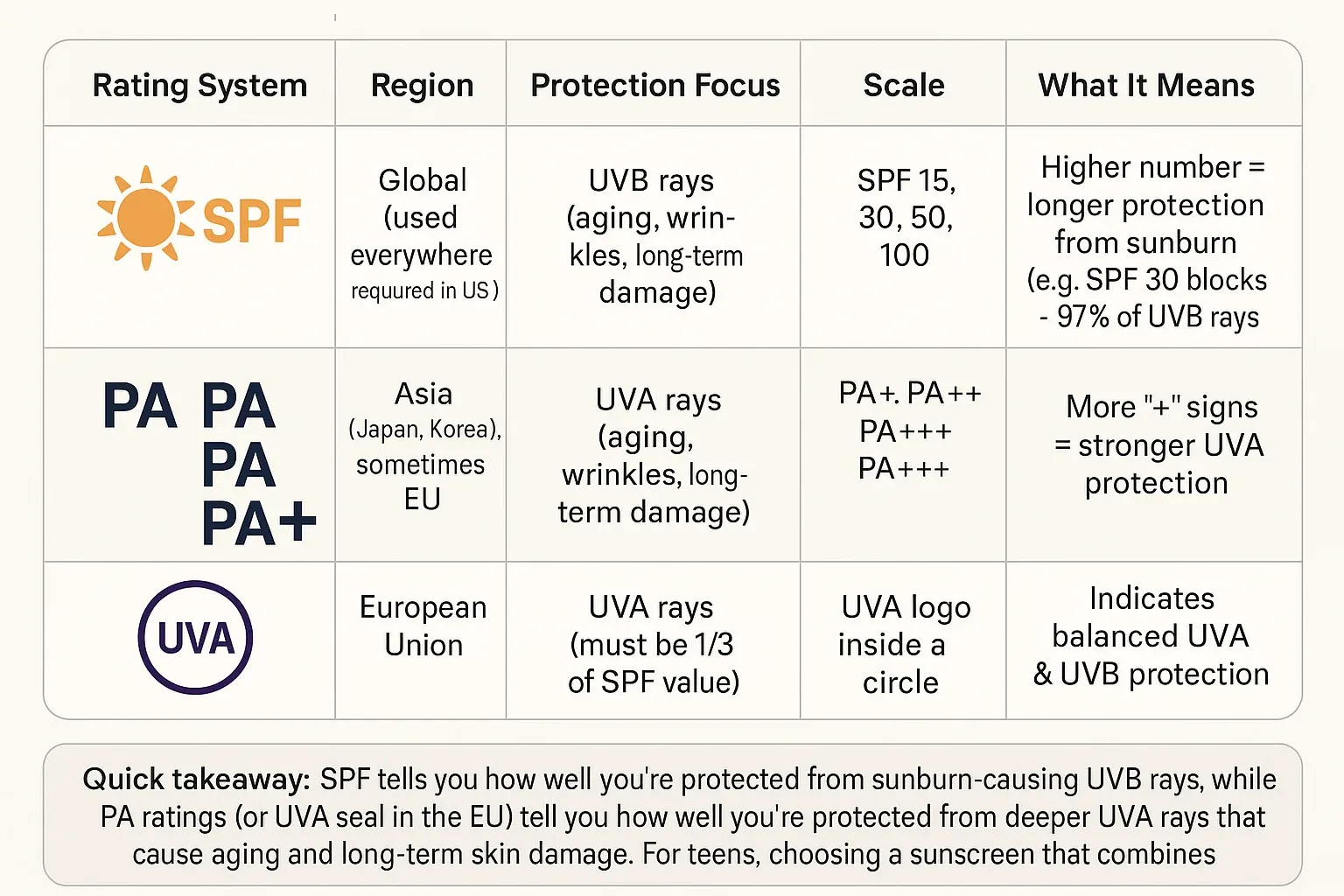
Here’s a quick comparison:
| Rating System | Region | Protection Focus | Scale | What It Means |
|---|---|---|---|---|
| SPF (Sun Protection Factor) | Global (used everywhere, required in US/EU) | UVB rays (burns, skin cancer risk) | SPF 15, 30, 50, 100 | Higher number = longer protection from sunburn (e.g., SPF 30 blocks ~97% of UVB rays) |
| PA (Protection Grade of UVA) | Asia (Japan, Korea), sometimes EU | UVA rays (aging, wrinkles, long-term damage) | PA+, PA++, PA+++, PA++++ | More “+” signs = stronger UVA protection |
| UVA Seal | European Union | UVA rays (must be 1/3 of SPF value) | UVA logo inside a circle | Indicates balanced UVA & UVB protection |
Quick takeaway: SPF tells you how well you’re protected from sunburn-causing UVB rays, while PA ratings (or UVA seal in the EU) tell you how well you’re protected from deeper UVA rays that cause aging and long-term skin damage. For teens, choosing a sunscreen that combines both is the safest option.
Application Tips for Teens: Getting it Right
Choosing the right sunscreen is only half the battle; applying it correctly is just as important.
Here are some tips to ensure you're getting the best protection:
- Apply 10-15 minutes before sun exposure: This gives the sunscreen time to absorb into your skin and start working.
- Use enough product: For your face and neck, use about two finger lengths of sunscreen. Don't skimp on it!
- Reapply every two hours: Or immediately after swimming or sweating.
- Don't forget often-missed areas: Like your ears, back of the neck, and tops of your feet.
Think of sunscreen application as a ritual, not a chore. Make it a part of your daily routine, just like brushing your teeth.
Consistency is key.
I've seen so many people get sunburned because they didn't reapply, even when they thought they were protected. Don't let that be you. Proper application is essential for the best sunscreens for teens to work effectively.
To help you visualize the correct amount of sunscreen, here's a quick guide:
| Body Area | Approximate Amount of Sunscreen |
|---|---|
| Face and Neck | Two finger lengths |
| Arms | One teaspoon per arm |
| Legs | Two teaspoons per leg |
| Torso (Front and Back) | Two teaspoons |
Remember, these are just guidelines. You may need to adjust the amount depending on your body size and the consistency of the sunscreen. The key is to ensure that all exposed skin is adequately covered.
How to Apply Sunscreen Correctly
Applying sunscreen the right way makes a huge difference in protection. Here’s the simple step-by-step guide:
- ⏱️ Apply 2 finger-lengths of sunscreen to your face and neck about 15 minutes before sun exposure.
- 🧴 Use about 1 teaspoon per arm, 2 teaspoons per leg, and 2 teaspoons for your torso.
- 🔁 Reapply every 2 hours, or immediately after swimming or sweating.
- 👂 Don’t forget ears, back of the neck, feet, and lips (use SPF lip balm).
Additional Sun Protection Measures
Sunscreen is your first line of defense, but it's not the only way to protect yourself from the sun.
Here are some additional measures you should take:
- Wear protective clothing: Wide-brimmed hats, long-sleeved shirts, and sunglasses can all help to shield your skin from the sun.
- Seek shade during peak sun hours: The sun is strongest between 10 AM and 4 PM, so try to stay in the shade during these times.
- Use lip balm with SPF: Your lips are just as susceptible to sun damage as the rest of your skin.
- Avoid tanning beds: Tanning beds are incredibly harmful and should be avoided at all costs.
These additional measures are like having extra layers of protection. They're especially important when you're spending a lot of time outdoors.
Remember, sun protection is a multi-faceted approach. It's not just about sunscreen; it's about being smart about sun exposure.
By combining these strategies, you can significantly reduce your risk of sun damage. This is the expert approach to ensuring you're getting the best protection, and it's crucial for finding the best sunscreens for teens, and using them correctly.
The Long-Term Benefits of Sun Protection
Protecting your skin from the sun isn't just about avoiding sunburns today; it's about preventing long-term damage that can affect your skin for years to come.
Consistent sun protection can help reduce the risk of premature aging, wrinkles, dark spots, and even skin cancer.
Think of it as an investment in your future self. You'll thank yourself later for taking care of your skin now. It's much easier to prevent sun damage than to reverse it.
As someone who's seen the effects of sun damage firsthand, I can't stress enough how important it is to start early and make sun protection a lifelong habit.
This is the most important part of the conversation, and it's why finding the best sunscreens for teens is crucial.
Making Sunscreen a Habit
The best sunscreen in the world won't do you any good if you don't use it consistently. The key is to make sunscreen application a habit, just like brushing your teeth or putting on your shoes.
Keep your sunscreen in a place where you'll see it every day, like on your bathroom counter or in your backpack. Make it a part of your morning routine, and don't forget to reapply throughout the day. It might seem like a hassle at first, but once you get into the habit, it'll become second nature.
And trust me, your skin will thank you for it. It's all about building good habits early on. This is the key to making sure that you're getting the most out of the best sunscreens for teens.
Conclusion
Choosing the best sunscreens for teens is a crucial step in protecting your skin from the harmful effects of the sun.
By understanding the importance of SPF, broad-spectrum protection, and the difference between mineral and chemical sunscreens, you can make informed choices that will benefit your skin for years to come.
Remember, sun protection is not just about avoiding sunburns; it's about preventing long-term damage and maintaining healthy, youthful skin.
Make sunscreen a non-negotiable part of your daily routine, and don't forget to take additional sun protection measures like wearing protective clothing and seeking shade during peak sun hours.
Your future self will thank you for it.
Frequently Asked Questions
Is a higher SPF always better?
No, not necessarily. SPF 30 to 50 provides excellent protection for daily use. Higher SPFs offer only a marginal increase in protection and can sometimes give a false sense of security, leading people to reapply less frequently.
Can I use the same sunscreen for my face and body?
While you can, it's often better to use a sunscreen specifically formulated for your face. Facial sunscreens are often lighter, non-comedogenic, and designed to be less irritating.
Do I need to wear sunscreen on cloudy days?
Yes, absolutely. UV rays can penetrate clouds, so it's important to wear sunscreen even when it's overcast.
How often should I reapply sunscreen?
You should reapply sunscreen every two hours, or immediately after swimming or sweating.
What if I have sensitive skin?
If you have sensitive skin, look for mineral sunscreens with zinc oxide or titanium dioxide. These are less likely to cause irritation. You can also test a small area of skin before applying it all over.
Further Resources



